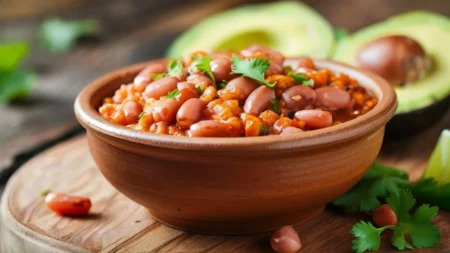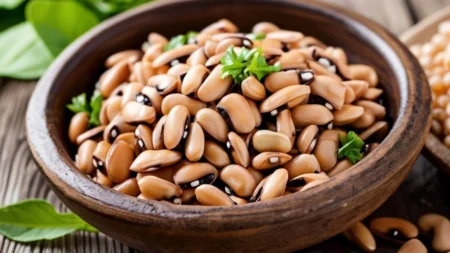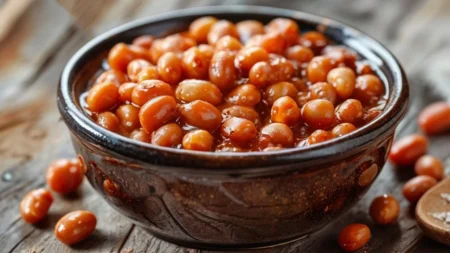Maintaining a healthy weight during childhood is crucial for your kids’ overall wellbeing and long-term health. This article will provide a comprehensive guide on establishing a well-rounded weight management routine for kids, covering essential aspects such as balanced nutrition, age-appropriate physical activity, goal-setting, and cultivating a positive body image. By incorporating these strategies, parents and caregivers can support their children in developing sustainable healthy habits that will benefit them throughout their lives.
Childhood obesity has become a growing public health concern in the United States, with the prevalence of obesity among children and adolescents standing at around 19.7% as of 2020. Factors such as sedentary lifestyles, unhealthy dietary patterns, and genetic predisposition can all contribute to the development of childhood obesity. If left unaddressed, childhood obesity can lead to a range of serious health issues, including type 2 diabetes, hypertension, heart disease, and mental health problems. Understanding the scope of this challenge is the first step in implementing effective weight management strategies for kids.
Key Takeaways
- Maintaining a healthy weight during childhood is crucial for overall wellbeing and long-term health.
- A comprehensive weight management routine for kids should cover balanced nutrition, age-appropriate physical activity, goal-setting, and positive body image.
- Childhood obesity is a growing public health concern, with serious long-term health consequences if left unaddressed.
- Incorporating sustainable healthy habits can benefit kids throughout their lives.
- Understanding the prevalence and risks of childhood obesity is the first step in implementing effective weight management strategies.
Understanding Childhood Obesity and Its Impacts
Childhood obesity has become a growing public health concern in the United States, with the prevalence of childhood obesity among children and adolescents standing at around 19.7% as of 2020. Risk factors for childhood obesity such as sedentary lifestyles, unhealthy dietary patterns, and genetic predisposition can all contribute to the development of this condition.
Prevalence and Risks of Childhood Obesity
According to the latest childhood obesity statistics, the prevalence of obesity among children and adolescents in the United States has continued to rise over the past few decades. Factors such as increased screen time, consumption of sugary and high-calorie foods, and lack of regular physical activity have all played a significant role in the growing health effects of childhood obesity.
Long-Term Health Consequences
If left unaddressed, childhood obesity can lead to a range of serious health issues, including type 2 diabetes, hypertension, heart disease, and mental health problems. These health effects of childhood obesity can have a profound impact on a child’s overall well-being and can continue to affect their health and quality of life into adulthood.
Understanding the scope of this challenge is the first step in implementing effective weight management strategies for kids, empowering them to develop lifelong healthy habits and mitigate the long-term health effects of childhood obesity.
Establishing a Balanced Diet for Kids
A balanced and nutritious diet is the foundation of a healthy weight management routine for kids. Emphasizing the consumption of whole, nutrient-dense foods such as fruits, vegetables, lean proteins, and whole grains can help ensure that children receive the essential vitamins, minerals, and macronutrients they need for growth and development.
Nutrient-Dense Foods to Prioritize
When it comes to healthy eating for kids, it’s important to focus on nutrient-rich food for children. This includes a variety of fresh fruits and vegetables, lean proteins like chicken, fish, and legumes, and whole grains such as brown rice, quinoa, and whole-wheat bread. By incorporating these nutrient-dense foods into your child’s diet, you can support their overall health and well-being.
Portion Control and Mindful Eating
In addition to the types of foods consumed, portion sizes for kids play a crucial role in maintaining a healthy weight. Teach your children about mindful eating habits for children, such as being present during meals, paying attention to hunger and fullness cues, and avoiding distractions like screens. This can help prevent overeating and promote a healthy relationship with food.
| Nutrient-Dense Foods | Portion Sizes for Kids |
|---|---|
| Fruits (e.g., apples, berries, oranges) Vegetables (e.g., broccoli, carrots, spinach) Lean proteins (e.g., chicken, fish, legumes) Whole grains (e.g., brown rice, quinoa, whole-wheat bread) | Grains: 1/2 to 1 cup per meal Fruits and vegetables: 1/2 to 1 cup per meal Protein: 2 to 4 ounces per meal Dairy: 1 cup per serving |
Incorporating Physical Activity into Daily Life
Regular physical activity is a crucial component of a weight management routine for kids. Incorporating age-appropriate exercises, such as brisk walking, running, swimming, and strength-training activities, can help children develop cardiovascular fitness, muscular strength, and overall physical well-being. The U.S. Department of Health and Human Services recommends that children and adolescents engage in at least 60 minutes of moderate-to-vigorous physical activity every day.
Age-Appropriate Exercise Recommendations
To ensure that your child is engaging in the right types of physical activity, consider the following age-appropriate exercise recommendations:
| Age Group | Recommended Activities |
|---|---|
| Preschool (3-5 years) | – Unstructured free play – Walking, running, and jumping – Simple throwing and catching activities – Dancing and music-based movement |
| Elementary School (6-11 years) | – Brisk walking – Running and jogging – Swimming and water activities – Bicycle riding – Gymnastics and dance – Strength-training exercises with bodyweight or light resistance |
| Middle and High School (12-18 years) | – Aerobic activities (e.g., basketball, soccer, tennis, swimming) – Strength-training exercises with resistance bands or light weights – High-intensity interval training (HIIT) – Yoga and Pilates |
By making physical activity a part of their daily lives, kids can establish lifelong habits that support healthy weight management and overall fitness.
Developing a Comprehensive Weight Management Routine for Kids
Crafting a comprehensive weight management routine for kids involves setting achievable goals, tracking progress, and engaging the whole family. When establishing weight management plan for kids, it’s important to focus on sustainable lifestyle changes rather than just short-term weight loss. Regular monitoring of growth, physical activity, and dietary habits can help identify areas for improvement and celebrate small victories.
Setting Realistic Goals and Tracking Progress
Setting goal-setting for childhood weight loss is crucial for guiding your child’s weight management journey. Work with your child to establish realistic, measurable goals that focus on improving overall health and fitness, rather than just numbers on the scale. Regularly tracking progress, such as monitoring physical growth, activity levels, and dietary patterns, can help you and your child identify areas of success and opportunities for further improvement.
Involving the Whole Family
Adopting a family-based approach to kids’ weight management can foster a supportive and motivating environment for your child to thrive. Engage the entire family in making healthy meals together, encouraging physical activities as a group, and celebrating non-scale victories. By involving everyone, you can create a cohesive, positive atmosphere that reinforces healthy habits and provides your child with the encouragement they need to succeed.
Fostering a Positive Body Image
Cultivating a positive body image is essential for children’s overall well-being and their ability to maintain a healthy weight. By addressing emotional eating and building self-esteem, you can help your kids develop a healthy relationship with their bodies and food.
Addressing Emotional Eating and Self-Esteem
It’s crucial to understand the underlying emotional and psychological factors that may contribute to unhealthy eating behaviors in children, such as emotional eating or poor self-esteem. Emotional eating, where kids turn to food to cope with their feelings, can undermine their weight management efforts. Additionally, low self-esteem can lead to negative body image and unhealthy coping mechanisms. By addressing these issues proactively, you can empower your children to develop a more positive self-perception and a healthier approach to food.
Celebrating Non-Physical Achievements
Shift the focus away from physical appearance and instead celebrate your children’s non-physical achievements, such as their creativity, problem-solving skills, or acts of kindness. This approach helps build self-esteem in children and encourages them to value themselves beyond their physical attributes. Body positivity for kids is about fostering an environment where they feel accepted and appreciated for who they are, not just how they look.
By incorporating these strategies into your weight management routine, you can prevent emotional eating in children and help them develop a healthy, positive body image. This holistic approach supports your kids in establishing sustainable healthy habits that benefit their physical and emotional well-being.
Overcoming Challenges and Barriers
Implementing an effective weight management routine for children can sometimes involve navigating various challenges and barriers. One of the primary obstacles young people may face is peer pressure and bullying related to their weight or appearance. These social dynamics can undermine a child’s efforts to maintain a healthy lifestyle and lead to emotional distress, further complicating their weight management journey.
Dealing with Peer Pressure and Bullying
It’s crucial for parents and caregivers to be proactive in addressing peer pressure and childhood obesity. By fostering open communication, validating their child’s feelings, and equipping them with effective coping strategies, adults can help children develop resilience and a stronger sense of self-worth. This may involve role-playing scenarios, encouraging participation in supportive social activities, and collaborating with school administrators to promote an inclusive, bully-free environment.
Finding Support and Resources
Fortunately, there are numerous support resources for kids’ weight management available to families. Parents and caregivers can connect with local healthcare providers, such as pediatricians, registered dietitians, or mental health professionals, who can offer personalized guidance and support. Additionally, joining support groups, either in-person or online, can provide a valuable network of shared experiences and peer-to-peer advice. Accessing educational materials and programs focused on challenges in childhood weight management can also empower both children and their families to overcome obstacles and maintain a healthy lifestyle.
| Type of Support | Description |
|---|---|
| Healthcare Providers | Pediatricians, registered dietitians, and mental health professionals can offer personalized guidance and support for children’s weight management. |
| Support Groups | In-person or online support groups can provide a network of shared experiences and peer-to-peer advice for families navigating childhood weight management challenges. |
| Educational Resources | Programs and materials focused on effective strategies for childhood weight management can empower children and their families to overcome obstacles and maintain a healthy lifestyle. |
Conclusion
Establishing a well-rounded weight management routine for kids is a holistic approach that encompasses balanced nutrition, regular physical activity, goal-setting, and the cultivation of a positive body image. By adopting these strategies, parents and caregivers can support their children in developing sustainable healthy habits that will benefit them throughout their lives.
Though the journey may present some challenges, with the right mindset, support, and resources, families can overcome obstacles and empower kids to achieve their weight management goals while fostering a lifelong commitment to overall wellness. The key takeaways for healthy childhood habits include incorporating a balanced diet, engaging in regular physical activity, setting realistic goals, and nurturing a positive body image.
By prioritizing these essential elements, you can help your children develop the necessary skills and mindset to maintain a healthy weight, leading to improved overall well-being and a greater appreciation for the importance of lifelong wellness. With dedication and a supportive environment, your children can embark on a journey towards a healthier, more vibrant future.
FAQ
What are the essential components of a healthy weight management routine for kids?
A comprehensive weight management routine for kids should include a balanced diet, regular physical activity, goal-setting, and the cultivation of a positive body image.
How can parents and caregivers support their children in maintaining a healthy weight?
Parents and caregivers can support their children’s weight management by making healthy meals together, encouraging physical activities as a family, setting realistic goals, and fostering a positive, supportive environment that promotes self-acceptance.
What are some of the long-term health consequences of childhood obesity?
If left unaddressed, childhood obesity can lead to serious health issues, such as type 2 diabetes, hypertension, heart disease, and mental health problems.
How can kids develop a healthy relationship with food and their bodies?
By addressing emotional eating, building self-esteem, and celebrating non-physical achievements, parents and caregivers can help kids cultivate a positive body image and a healthy relationship with food.
What resources are available for families looking to support their children’s weight management efforts?
Families can connect with healthcare providers, join support groups, and access educational materials on effective weight management strategies for kids to overcome challenges and find the support they need.
How much physical activity do children and adolescents need for healthy weight management?
The U.S. Department of Health and Human Services recommends that children and adolescents engage in at least 60 minutes of moderate-to-vigorous physical activity every day.
What are some nutrient-dense foods that should be prioritized in a kid’s diet?
Whole, nutrient-dense foods like fruits, vegetables, lean proteins, and whole grains should be emphasized in a balanced diet for kids to ensure they receive the essential vitamins, minerals, and macronutrients they need for growth and development.
How can families involve the whole family in the weight management process?
Families can involve the whole family in the weight management process by making healthy meals together, encouraging physical activities as a group, and creating a supportive environment that promotes healthy habits for everyone.











